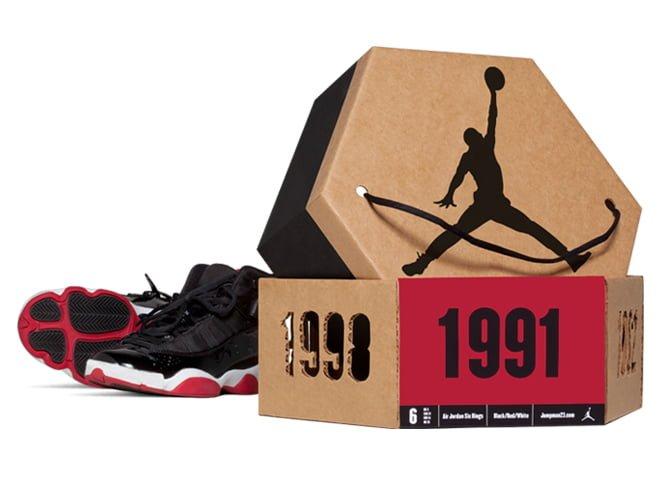Can Cardboard Shoe Boxes Be Used For Shipping Items Safely?
Effective packaging is crucial in the shipping industry as it ensures the safe and intact delivery of goods. Good packaging protects items from damage, keeps them secure during transit, and provides an excellent first impression to the recipient. With the rise of e-commerce, the need for reliable and efficient packaging solutions has never been more critical. Cardboard shoe boxes are ubiquitous, typically used for packaging and storing shoes. These boxes, made from various types of cardboard, vary in size and strength. Due to their accessibility and low cost, many people and businesses consider using them for shipping a variety of items.
This article explores whether cardboard shoe boxes can be effectively used for shipping items safely. It examines the materials, benefits, and drawbacks of using these boxes, provides practical tips for their preparation, and discusses environmental considerations and industry standards. The aim is to provide a comprehensive guide to help readers make informed decisions about using cardboard shoe boxes for shipping.
History Of Cardboard Boxes
Cardboard boxes have a rich history dating back to the 19th century. They were first patented in England in 1856 and were initially used for lining tall hats. The first commercial cardboard box was produced in 1890 by the Scottish-born Robert Gair, who discovered that by cutting and creasing cardboard in one operation, he could produce prefabricated paperboard boxes. Cardboard shoe boxes likely emerged shortly after the widespread adoption of cardboard boxes for packaging. As shoe production increased, the need for convenient and cost-effective packaging solutions grew. Cardboard shoe boxes became the standard due to their simplicity, ease of stacking, and protection offered to the footwear.
Initially, cardboard shoe boxes were used primarily for retail packaging and storage rather than shipping. However, as the demand for lightweight and economical shipping solutions increased, many businesses started repurposing these boxes for shipping small and lightweight items.
Material Composition Of Cardboard Shoe Boxes
Cardboard shoe boxes are typically made from corrugated cardboard or paperboard. Corrugated cardboard consists of a fluted corrugated sheet and one or two flat linerboards. This construction provides strength and durability. Paperboard, used for lighter-duty applications, is a single layer of thick paper. The structural integrity of a cardboard shoe box depends on its material and construction. Corrugated cardboard offers excellent strength and can withstand significant weight and pressure, making it suitable for shipping. Paperboard, while less durable, can be reinforced for added strength. Cardboard is made from natural wood fibers, which makes it biodegradable and recyclable. The environmental impact varies based on the type of cardboard and the production process. Recycled cardboard reduces the need for virgin materials and energy, thus lowering the environmental footprint.
Types Of Cardboard Shoe Boxes
Standard Cardboard Shoe Boxes
Standard cardboard shoe boxes are the most common type, designed primarily for packaging shoes. They are typically made from lightweight corrugated cardboard or paperboard and are ideal for storing and transporting footwear.
Heavy-Duty Cardboard Shoe Boxes
Heavy-duty cardboard shoe boxes are designed for more robust applications. Made from thicker, more durable corrugated cardboard, these boxes can handle heavier items and provide better protection during shipping.
Eco-Friendly Cardboard Shoe Boxes
Eco-friendly cardboard shoe boxes are made from recycled materials and are designed to be easily recyclable. These boxes often use minimal inks and adhesives to reduce their environmental impact and appeal to environmentally conscious consumers.
Advantages Of Using Cardboard Shoe Boxes For Shipping
Cost-Effectiveness
Cardboard shoe boxes are generally inexpensive, making them a cost-effective option for shipping. Their low cost, combined with their availability, makes them an attractive choice for small businesses and individuals.
Availability And Convenience
Cardboard shoe boxes are widely available and come in various sizes. This makes them convenient for shipping a range of items. They are also easy to assemble and can be quickly prepared for shipping.
Customizability For Different Items
Cardboard shoe boxes can be easily customized to fit different items. They can be reinforced with additional materials, padded with cushioning, and sealed with sturdy tape to ensure the safe transport of goods.
Disadvantages Of Using Cardboard Shoe Boxes For Shipping
Limitations In Durability
While cardboard shoe boxes are convenient, they are not as durable as other packaging materials like plastic or wood. They can easily be crushed or damaged, especially when subjected to rough handling during shipping.
Susceptibility To Moisture And Damage
Cardboard is highly susceptible to moisture, which can weaken the material and compromise the safety of the contents. This makes cardboard shoe boxes less ideal for shipping in wet conditions or climates.
Size And Shape Limitations
Cardboard shoe boxes come in standard sizes and shapes designed for shoes, which may not always be suitable for other items. This can limit their use for shipping oddly shaped or oversized items.
Assessing The Safety Of Shipping With Cardboard Shoe Boxes
To ensure safe shipping, containers must be strong, durable, and capable of protecting their contents from damage. They should be able to withstand the rigors of transit, including handling, stacking, and environmental conditions. Various tests can be conducted to assess the strength of cardboard shoe boxes, such as compression tests to measure their ability to withstand stacking and drop tests to evaluate their impact resistance. Several businesses have successfully used cardboard shoe boxes for shipping. For instance, small e-commerce shops often use these boxes to ship lightweight items like accessories and clothing. Customer feedback generally indicates that with proper preparation, cardboard shoe boxes can safely transport items.
Preparing Cardboard Shoe Boxes For Shipping
Reinforcing a cardboard shoe box involves adding layers of tape to the seams and edges and possibly inserting additional cardboard to strengthen the walls. This can help prevent the box from collapsing or tearing during shipping. Using padding and cushioning materials, such as bubble wrap, foam peanuts, or crumpled paper, helps protect the items inside the box. These materials absorb shocks and prevent the contents from moving around. Proper sealing is crucial to ensure the box remains closed during transit. Using strong packing tape to seal all seams and edges helps secure the box. Additional strapping or bands can be used for added security.
Alternative Uses For Cardboard Shoe Boxes
Cardboard shoe boxes are excellent for storage solutions. They can be used to organize various items, from small household goods to office supplies. Labeling the boxes makes it easy to identify the contents. In homes and offices, cardboard shoe boxes can help declutter spaces. They can be used to store documents, craft supplies, or even as drawer organizers. Their stackable nature maximizes storage efficiency. Cardboard shoe boxes can be transformed into various DIY projects. They can be decorated and repurposed as gift boxes, planters, or even children’s toys. Their versatility makes them a favorite for creative upcycling projects.
Success Stories Of Shipping With Cardboard Shoe Boxes
Many small businesses have turned to cardboard shoe boxes for their shipping needs. These boxes offer a cost-effective solution that meets their budget constraints while still providing adequate protection for their products. Startups and entrepreneurs often face tight budgets. Using cardboard shoe boxes for shipping can result in significant cost savings, allowing them to allocate resources to other areas of their business. Customers appreciate receiving their purchases in good condition, and cardboard shoe boxes, when properly prepared, can meet this expectation. Positive feedback from customers about packaging quality can enhance a brand’s reputation.
Environmental Considerations
Cardboard shoe boxes are highly recyclable and can be repurposed multiple times. Recycling cardboard helps reduce waste and conserve natural resources, making it an environmentally friendly option. Cardboard is biodegradable, breaking down naturally over time without harming the environment. The production of cardboard boxes has a lower environmental footprint compared to plastic and other non-biodegradable materials. Adopting eco-friendly practices, such as using recycled materials and minimizing packaging waste, is crucial in shipping. Businesses can enhance their sustainability by choosing cardboard shoe boxes and implementing green packaging strategies.
Innovations In Cardboard Shoe Box Design
Innovations in smart packaging technology are transforming cardboard shoe boxes. Features like RFID tags and QR codes can be integrated into the boxes for tracking and inventory management. Advancements in material science have led to stronger and more durable cardboard. However these improvements make cardboard shoe boxes more suitable for shipping a wider range of items. The future of cardboard box manufacturing is focused on sustainability and efficiency. Innovations such as biodegradable coatings and advanced recycling techniques are expected to enhance the environmental benefits of cardboard boxes.
DIY Shipping Tips With Cardboard Shoe Boxes
To modify and strengthen a cardboard shoe box, you can add layers of cardboard to the interior walls, reinforce the seams with tape, and use additional padding materials. So these modifications enhance the box’s structural integrity. When shipping fragile items in a cardboard shoe box, ensure they are well-padded and securely positioned. Use bubble wrap, foam, or crumpled paper to cushion the items and prevent movement during transit. Shipping unusual items requires creativity. Cardboard shoe boxes can be customized with inserts, dividers, or additional padding to accommodate items of various shapes and sizes.
Industry Standards And Regulations
Industry standards for packaging ensure that goods are transported safely and efficiently. These standards cover aspects such as box strength, size, and labeling requirements. There are specific regulations governing the use of cardboard boxes in shipping, particularly for international shipments. These regulations ensure that packaging materials meet safety and environmental standards. Compliance with industry standards and regulations is crucial for businesses using cardboard shoe boxes for shipping. So ensuring that boxes meet these standards helps prevent shipping delays and damages.
Consumer Perspectives On Cardboard Shoe Box Shipping
Customers generally prefer eco-friendly and well-packaged products. Cardboard shoe boxes, when used effectively, can meet these preferences and enhance customer satisfaction. There is a growing trend towards sustainable and minimalistic packaging among consumers. Cardboard shoe boxes align with this trend due to their recyclability and lower environmental impact. So packaging plays a significant role in brand perception. Eco-friendly and well-designed packaging can enhance a brand’s image and appeal to environmentally conscious consumers.
Business Considerations For Using Cardboard Shoe Boxes
A cost-benefit analysis can help businesses determine the viability of using cardboard shoe boxes for shipping. Factors such as cost, durability, and customer satisfaction should be considered. So logistical considerations include the availability of boxes, storage space, and handling procedures. Efficient logistics ensure that shipping operations run smoothly and cost-effectively.
Cardboard shoe boxes offer branding opportunities through custom printing and design. Businesses can enhance their brand visibility and customer experience by using branded packaging.
Conclusion
Cardboard shoe boxes, emblazoned with your brand’s unique logo and colors, can be a viable option for shipping items safely when prepared correctly. They offer several benefits, including cost-effectiveness, availability, and environmental friendliness, while also serving as a powerful branding tool. However, their limitations in durability and moisture resistance must be considered. While cardboard shoe boxes may not be suitable for all types of items, they can be an excellent choice for lightweight and non-fragile goods, especially when adorned with your custom branding. Proper reinforcement and padding can mitigate many of their drawbacks, making them a practical option for many shipping needs. Businesses and individuals should evaluate their specific shipping requirements and consider using custom branded box where appropriate. Adopting best practices for reinforcing and preparing these boxes can ensure the safe and efficient delivery of goods, while also leaving a lasting impression with customers.


